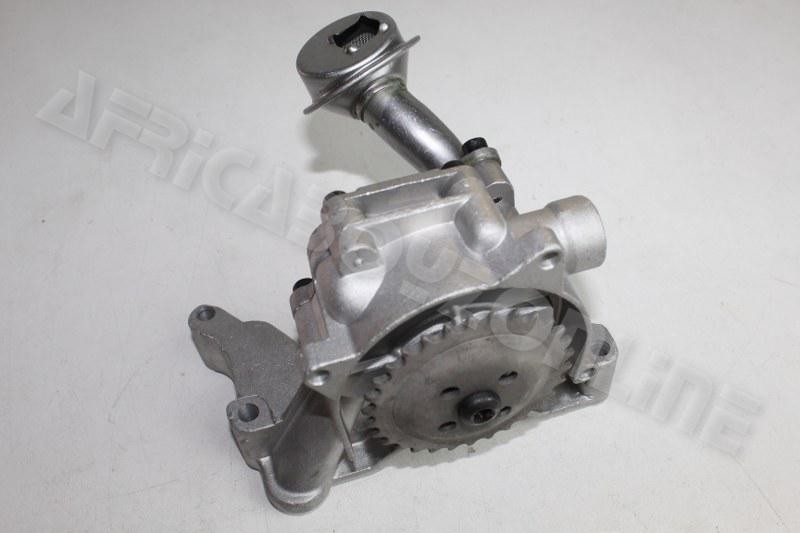Find a high-efficiency clp engine for your equipment.
Find a high-efficiency clp engine for your equipment.
Blog Article
Just How a Clp Engine Can Boost Efficiency in Various Industries
The development of CLP engines marks a considerable change in functional efficiency across various industries, driven by their ability to enhance gas usage and minimize downtime. Industries such as production and logistics stand to get considerably from their durable style and regular power outcome, which assure to streamline procedures and boost productivity. As companies significantly prioritize sustainability together with performance, the role of CLP engines comes to be much more critical. What remains to be seen is just how these advancements will form the future landscape of commercial procedures and their influence on broader economic patterns (clp engine).
Introduction of CLP Engines
CLP engines, or Constant Liquid Propellant engines, stand for a considerable improvement in propulsion innovation, particularly for space applications. These engines make use of a constant feed system that enables the continual expulsion of propellant, bring about improved efficiency and efficiency compared to traditional strong or hybrid propulsion systems. By preserving a constant circulation of liquid propellant, CLP engines can achieve extra accurate thrust control, which is critical for navigating spacecraft in various goal scenarios.
The layout of CLP engines incorporates advanced products and innovative gas administration systems. clp engine. This results in minimized weight and boosted reliability, essential variables for long-duration area missions. In addition, the constant operation minimizes the danger of combustion instability, a typical challenge in standard rocket engines.

Benefits in Manufacturing
The production of Constant Liquid Propellant (CLP) engines provides a number of significant benefits that improve both effectiveness and cost-effectiveness. One of the primary benefits is the streamlined manufacturing process, which minimizes the complexity connected with traditional propulsion systems. By utilizing fluid propellant, suppliers can accomplish higher precision in engine efficiency, bring about enhanced energy result and lowered waste.
Furthermore, CLP engines help with a greater level of modularity, permitting easier assimilation right into various production lines. This versatility can substantially lower lead times and improve overall functional versatility. The use of CLP modern technology likewise tends to lessen the need for extensive upkeep due to less moving components, which translates right into reduced downtime and functional costs.

Applications in Logistics
Leveraging Continual Liquid Propellant (CLP) engines in logistics uses substantial benefits in operational efficiency and reliability. These engines offer a robust option for different transport demands, making it possible for the seamless movement of items across huge ranges. The inherent style of CLP engines permits consistent power output, which translates into smoother and much more predictable transport routines.
One of the crucial applications of CLP engines in logistics remains in durable products transport, where they can drive both ground and airborne lorries. Their ability to preserve high efficiency under differing lots problems ensures that delivery timelines are met, thus improving customer complete satisfaction. In addition, CLP engines can be incorporated right into automated logistics systems, assisting in real-time tracking and enhancing route preparation.
Additionally, the durability of CLP engines reduces upkeep downtime, permitting logistics firms to optimize their operational capabilities. This is particularly valuable in warehousing procedures, Discover More where performance in managing and carrying goods is critical. As logistics proceeds to develop, the integration of CLP engines stands for a forward-thinking method that not only boosts performance but additionally supports the sector's growing needs for reliability and rate.
Effect on Power Effectiveness
How do Continual Liquid Propellant (CLP) engines improve energy performance in transportation? CLP engines use a constant circulation of fluid gas, enhancing burning procedures and maintaining a steady drive output. This style decreases energy losses connected with typical combustion engines, where fuel shipment can differ and bring about ineffectiveness.
The constant procedure of CLP engines enables a more effective thermal cycle, causing greater specific impulse compared to conventional engines. clp engine. This equates to minimized gas intake for the same quantity of job done, considerably reducing functional expenses throughout numerous transport fields, consisting of aviation and maritime industries
Furthermore, the ability of CLP engines to maintain optimal performance under varying load conditions reduces the need for frequent acceleration and slowdown, better boosting gas performance. Boosted power effectiveness not just adds to cost savings but also leads to lower greenhouse gas emissions, aligning with global sustainability objectives.
Future Trends and Innovations
Arising innovations in Continual Fluid Propellant (CLP) engine modern technology assurance to reinvent the landscape of transportation efficiency and sustainability. As industries pivot toward greener alternatives, CLP engines stand at the center, incorporating cutting-edge products and style approaches that enhance performance while decreasing ecological effect.
One of the most promising fads is the fostering of crossbreed systems that integrate CLP engines with renewable resource resources. This synergy can optimize gas intake and decrease emissions, aligning with international sustainability objectives. Furthermore, advancements in computational liquid dynamics (CFD) are helping with the design of even more aerodynamically reliable engines, causing minimized drag and improved gas effectiveness.
In addition, the development of clever tracking systems is set to boost operational performances. These systems take advantage of information analytics and IoT technology to maximize engine performance in learn this here now real-time, making sure that the engines operate within their most effective parameters.
As study continues to discover alternate propellant formulations-- such as biofuels and artificial gas-- the future of CLP engines looks appealing. By harnessing these technologies, next page markets can not just enhance their performance but likewise contribute substantially to a cleaner, more sustainable future in transport.
Verdict
In conclusion, CLP engines stand for a significant advancement in efficiency throughout multiple sectors. Their ability to enhance gas intake and reduce operational expenses, incorporated with a continuous feed system, improves power result and functional integrity. The integration of advanced materials and fewer moving components reduces upkeep demands, while positioning with sustainability objectives placements CLP engines as a crucial modern technology for the future. Proceeded technology in this area assures more renovations in performance and ecological efficiency.
Report this page